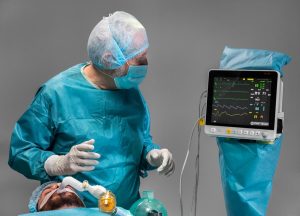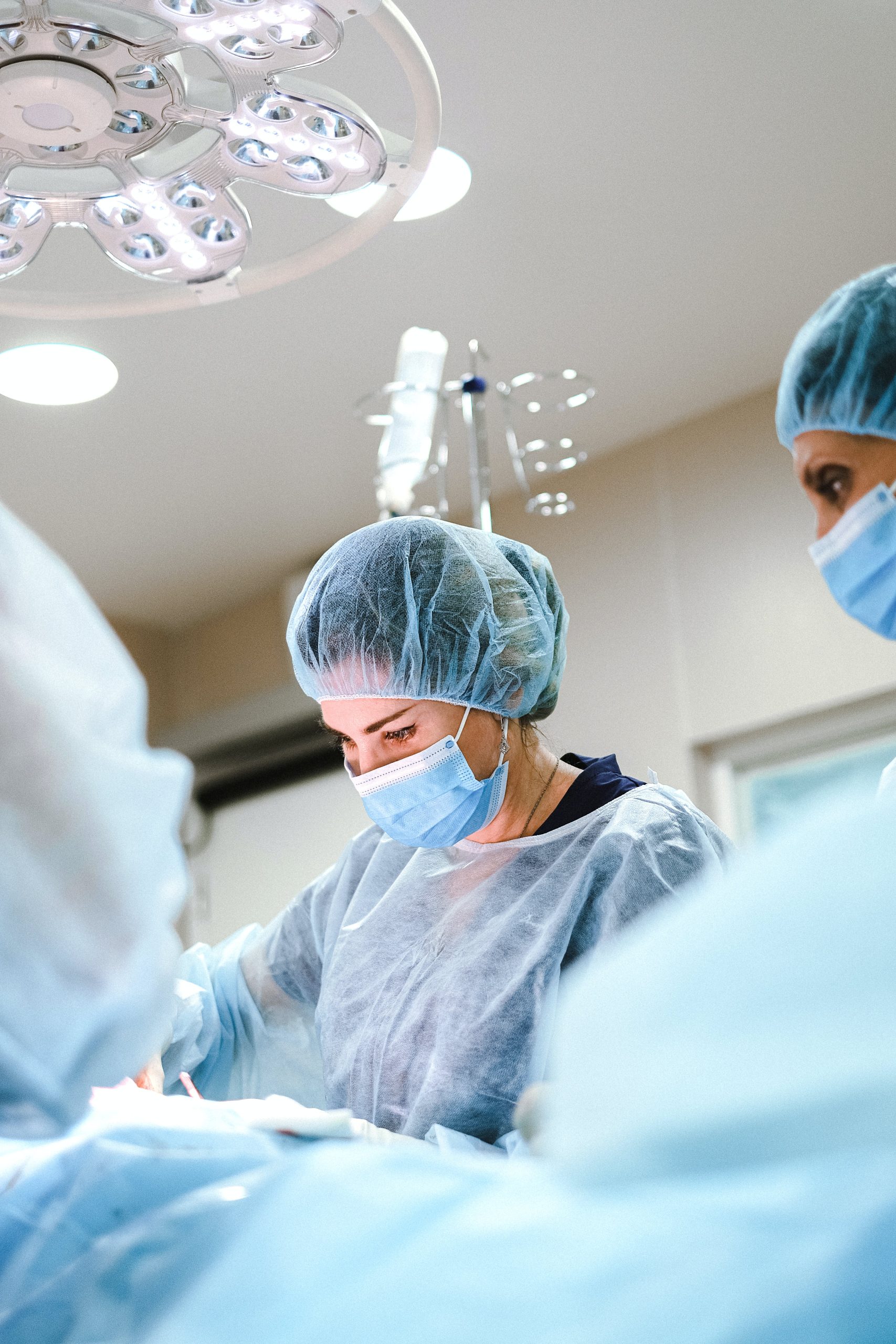Balloon Sinusplasty
1. What is the condition about?
Balloon Sinuplasty is a breakthrough surgical procedure used to treat chronic sinusitis, a common and uncomfortable condition. Chronic sinusitis involves the inflammation of the sinuses, which are hollow cavities located in the facial bones around the nose and eyes. These sinuses are lined with a mucous membrane and are responsible for producing mucus to keep the nasal passages moist and trapping harmful particles.
When the sinuses become inflamed and filled with mucus due to infections, allergies, or other factors, it can lead to a range of symptoms, including nasal congestion, facial pain, headaches, and difficulty breathing. Balloon Sinuplasty is designed to provide long-lasting relief from these symptoms by addressing the underlying cause.

2. What are the causes?

Common Causes of Chronic Sinusitis:
- Infections: Viral, bacterial, or fungal infections can trigger inflammation of the sinus linings.
- Allergies: Allergic reactions to pollen, dust, pet dander, or other allergens can lead to chronic sinusitis.
- Nasal Polyps: Noncancerous growths in the nasal passages can obstruct proper sinus drainage.
- Deviated Septum: A deviated or crooked nasal septum can block sinus passages, preventing proper airflow and drainage.
- Environmental Irritants: Exposure to smoke, pollution, and other irritants can irritate the sinuses.
- Respiratory Infections: Conditions like the common cold or flu can lead to acute sinusitis, which may become chronic if left untreated.
Understanding the causes of chronic sinusitis is crucial for effective treatment, including Balloon Sinuplasty.
3. How common is the condition?
Chronic sinusitis is a prevalent condition worldwide, affecting millions of people of all ages. The exact prevalence may vary by region and population, but it is estimated that a significant percentage of individuals experience chronic sinusitis at some point in their lives.
Global Prevalence:
- In the United States, over 30 million people are diagnosed with sinusitis annually.
- In Singapore, chronic sinusitis is not uncommon, with a substantial number of individuals seeking treatment for related symptoms.
Risk Factors: Certain risk factors, such as a history of allergies, asthma, or recurrent sinus issues, may increase the likelihood of developing chronic sinusitis.
4. What can an ENT Specialist do for you?
Consulting with an Ear, Nose, and Throat (ENT) specialist, also known as an otolaryngologist, is crucial for effectively managing chronic sinusitis and related sinus issues.
The Role of an ENT Specialist:
Consulting with an ENT specialist ensures that patients receive the most appropriate and advanced care for their sinus conditions, potentially leading to improved quality of life and symptom relief.
5. How can the condition be treated?
The treatment of chronic sinusitis depends on its cause, severity, and duration. Various treatment options are available, ranging from conservative approaches to surgical interventions like Balloon Sinuplasty.
Treatment Options for Chronic Sinusitis :

Medications

Lifestyle Modifications
Lifestyle changes, such as avoiding triggers, using humidifiers, and practicing good nasal hygiene, can help alleviate symptoms and prevent recurrence.

Minimally Invasive Procedures
Balloon Sinuplasty is a minimally invasive surgical option that involves the use of a small balloon to dilate blocked sinus passages, promoting proper drainage.

Traditional Sinus Surgery
In cases of severe or recurrent sinusitis, traditional sinus surgery may be necessary to remove obstructions and correct structural issues.
Balloon Sinuplasty has gained popularity due to its effectiveness, minimal discomfort, and shorter recovery period compared to traditional sinus surgery. The procedure is performed on an outpatient basis, allowing patients to return to their daily activities sooner.
6. Guidelines for Surgery
Balloon Sinuplasty is a specialized surgical procedure that requires careful preparation and adherence to guidelines to ensure a successful outcome.
Pre-operative Preparations: Before undergoing Balloon Sinuplasty, patients should:
- Consultation: Have a thorough consultation with their ENT specialist to confirm the need for the procedure and discuss expectations.
- Medical History: Provide a comprehensive medical history, including allergies, medications, and previous surgeries.
- Medication Review: Discuss the discontinuation or adjustment of certain medications, such as blood thinners, with their healthcare provider.
- Fasting: Follow fasting instructions provided by the surgical team to prevent complications during anesthesia.
The Balloon Sinuplasty Procedure: During the Balloon Sinuplasty procedure:
- Anesthesia: Typically, local anesthesia with sedation is used to ensure patient comfort during the surgery.
- Balloon Insertion: The surgeon inserts a thin, flexible catheter with a deflated balloon into the blocked sinus passage under endoscopic guidance.
- Balloon Inflation: Once the catheter is in position, the balloon is gently inflated to expand and open the blocked sinus passage.
- Mucus and Debris Removal: The sinuses are irrigated to remove excess mucus and debris, improving drainage.
- Deflation and Removal: After achieving the desired expansion, the balloon is deflated and removed, leaving the sinus passage open.
Recovery and Post-operative Care: After the procedure:
- Recovery Room: Patients are monitored in a recovery area to ensure their vital signs are stable.
- Home Recovery: Most patients can return home on the same day with instructions for post-operative care.
- Medications: Antibiotics and pain relievers may be prescribed to prevent infection and manage discomfort.
- Follow-up: Scheduled follow-up appointments are essential to monitor progress and address any concerns.
7. Evaluation & Follow Up for Treatment
Post-operative evaluation and follow-up are crucial aspects of successful Balloon Sinuplasty treatment.
Follow-up Appointments: Patients should attend all scheduled follow-up appointments with their ENT specialist to:
- Assess Healing: The specialist will evaluate the healing process, ensuring the sinuses remain open and free of infection.
Symptom Monitoring: Any persistent or recurrent symptoms, such as congestion or facial pain, will be closely monitored during follow-up appointments.
- Adjustments: If necessary, the treatment plan may be adjusted based on the patient’s progress and response to the procedure.
Long-term Care: Long-term care and management may include:
- Lifestyle Modifications: Continuing good nasal hygiene practices and avoiding known triggers to prevent the recurrence of sinus issues.
- Allergy Management: For patients with allergies, managing allergies effectively can significantly reduce the risk of future sinus problems.
- Medication Management: Following the prescribed medication regimen as directed by the healthcare provider to prevent infections or manage symptoms.
Regular follow-up and adherence to the recommended long-term care plan are essential for maintaining the benefits of Balloon Sinuplasty and ensuring that the patient enjoys sustained relief from chronic sinusitis symptoms.
8. Risks of Surgery
While Balloon Sinuplasty is considered a safe and effective procedure, like any surgery, it carries some inherent risks. It’s important for patients to be informed about these potential risks.
Possible Risks and Complications:
- Bleeding: Minimal bleeding is common during and after the procedure but is usually manageable and temporary.
- Infection: Infections are rare but possible; prompt treatment is crucial if they occur to prevent complications.
- Perforation: There’s a slight risk of unintentional perforation of the sinus lining during the procedure, which can be repaired if necessary.
- Recurrence: In some cases, sinusitis symptoms may return over time, necessitating additional treatment or adjustments to the initial procedure.
It’s essential to note that the overall risk of complications with Balloon Sinuplasty is relatively low, and most patients experience significant symptom relief without major issues. Patients should discuss any concerns about potential risks with their ENT specialist during the consultation process.
9. Alternatives to Surgery
- Medications: For mild to moderate cases of sinusitis, medications such as antibiotics (for bacterial infections), antihistamines (for allergies), and decongestants (to relieve congestion) may provide relief.
- Nasal Irrigation: Using saline rinses or neti pots can help clear mucus and alleviate symptoms.
- Allergy Management: Identifying and managing allergies can prevent recurrent sinus issues and may reduce the need for surgical intervention.
- Traditional Sinus Surgery: For severe cases, recurrent sinusitis, or structural abnormalities, traditional sinus surgery may be recommended to address specific issues.

